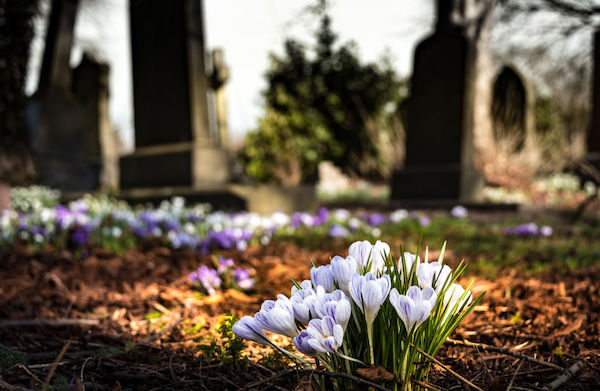By TalkDeath
[S]ome of us think of it often, others none at all. Sometimes we joke about it, other times fear it. No matter your approach or point of view, the fact remains: we will all inevitably die. It is literally the one thing we all have in common. And, on top of that, we will have to bear witness to the deaths of those around us. Yet, in spite of this irrefutable fact, Western culture doesn’t seem to be able to talk about the big “it.” Instead of allowing this commonality to bring us together, it often alienates us from each other. This is where the Death Positive movement comes in.
It is allude to in popular culture, through commercials, music, and other types of media. It is the subject of films and novels, and even television series. But even though we are in many ways surrounded by representations of death and grief, its presence and role in our own lives is something many feel afraid or uncomfortable speaking about. It is this internal and societal conundrum that many of us experience that is the focus of the “Death Positive” Movement.
The Death Positive (or Death Positivity) Movement is represented by the general (and growing) movement toward opening platforms for discussion about the inevitability of death and dying. The movement focuses on the importance of encouraging open discussions on the reality of both our own death, and the death of others. This includes the creation of platforms and spaces where such discussions can transpire in a comfortable, honest, open, and curious environment; where individuals may come together with different perspectives and exchange them with one another.
It also has a very practical goal of teaching us how to speak to others (i.e. our parents and partners) about their end-of-life wishes, as well as our own. The hope is that death will become de-mystified, and that as a result, society (and the individuals that comprise it) will be able to prepare for death and the grief that often follows. More importantly, discussing death and dying actually enables us to think about our own immediate lives. It encourages us to lead the life we want to live, and appreciate the little things.
You may be wondering where it is that these death positive discussions take place? How can you become involved? We’ll give you hint- it doesn’t happen in mortuaries or creepy church basements over skeletons and ouija boards. There are in fact a number of platforms- both online and in physical spaces- where death positive discussions take place on a regular basis.
One of the most widely and regularly practiced organized series of discussions on death and dying are known as Death Cafés, and occur all over the world. First established in 2004 by Swiss social anthropologist, Bernard Cretan, with the intention of breaking the taboo surrounding discussing death, they have since been held in cities all over the world. At a Death Café people will gather over coffee and treats to discuss death, dying, and experiences of grief.
Much of this discussion enables the participants to understand what is most important in their lives, allowing them to focus on these positive elements to live more fully and happily. They are often held in different locations throughout a given city, but always with the intention of creating comfortable spaces to discuss personal experiences and questions about death, dying, grief, and all that’s in between.
We highly recommend taking part in a Death Cafe in your area!
Complete Article ↪HERE↩!




